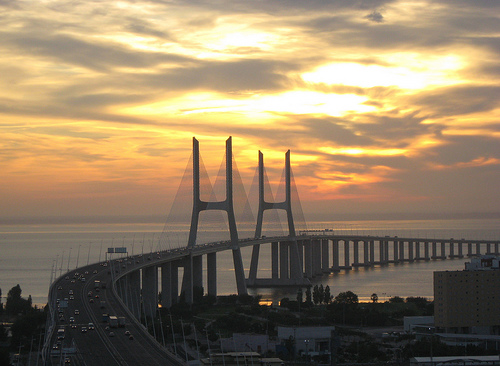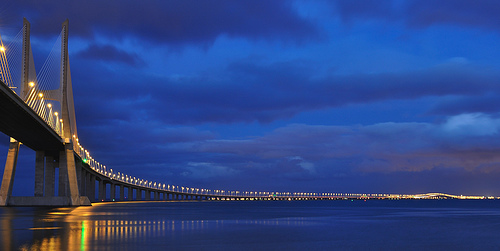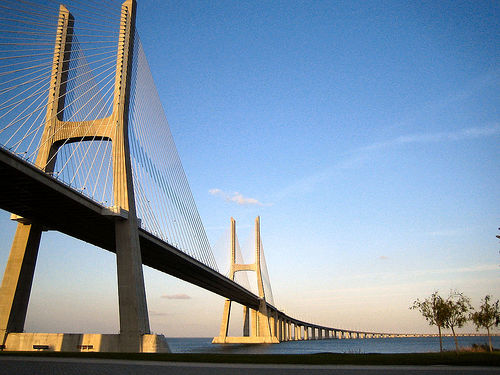What can a bridge give to a traveler? Basically, a history and a beautiful view. But it’s not limited to it. While it might not be allowed to walk on most of the bridges, it is allowed to walk along the roads around them, and the view they provide you, especially when you are walking with a loved one is enough to remember it for a lifetime. I bet most of the loving couples have experienced stronger and deeper feelings for their loved one while walking along a road with a view to a bridge. Not many people will understand how it feels like, until they experience it. and on this score, if you are visiting the spectacular Portuguese capital make sure to have a walk around Vasco da Gama Bridge.

Vasco da Gama Bridge is not like the bridges across the Seine, which you can cross on foot at any time of the day and also admire the beautiful architectural pieces erected on them. But Vasco da Gama Bridge has a different magic. Along with the Tower Bridge in England, the Széchenyi Chain Bridge in Hungary and the Brooklyn Bridge in the U.S., Vasco da Gama Bridge is one of the most spectacular and impressive bridges in the world.
There is probably no need to talk about the naming of the bridge. Even if you don’t know much about him, you have probably at least once heard about world-known Portuguese explorer Vasco da Gama after whom the bridge is named. Not only has this bridge received the explorer’s name, but also the popular Vasco da Gama Shopping Center and the Vasco da Gama Aquarium, which is one of the interesting sites in Lisbon.

Vasco da Gama Bridge is the longest bridge in Europe. It is 17.2 kilometers long. The bridge was built across Tagus River with the goal to ease traffic congestion. Another reason was to provide safer and easier access to the 1998 World Fair held in Lisbon. The project of the bridge cost USD 1.1 bln and 3300 workers were involved in the construction works.
The bridge doesn’t have a significant historical value, meaning that it was built in the recent times and therefore it is still in the process of creating its history. Some 50-70 years down the road the bridge will already be considered as one of the historical heritages of Lisbon. The construction of the bridge started in 1995 and it was opened on March 29, 1998. The date is especially important because the opening of the bridge was at the right time in the right place. It provided an easy transfer of people from Southern Lisbon, Spain and other European countries to Expo 98. In case you don’t know, during that time Portuguese people were celebrating the 500th anniversary of Portuguese discoveries, including Vasco da Gama’s discovery of the Europe-India sea route.

The bridge’s life expectancy is 120 years. To have some idea of how stable and safe it is, it should be said that it can stand an earthquake 4.5 times stronger than the earthquake of 1755. If you don’t know, then it should be said that the mentioned earthquake proved to be so disastrous that it not only caused a huge damage to the city, but also razed to the ground the majority of popular sites, including the Sao Vicente de Fora, the Historical Commerce Square, Igreja de Sao Domingos and so on.
Lastly, the beauty of the bridge can be fully admired in Parques das Nacoes. The park itself will also amaze its visitors, as it was built by innovative artists and features futuristic architecture.


